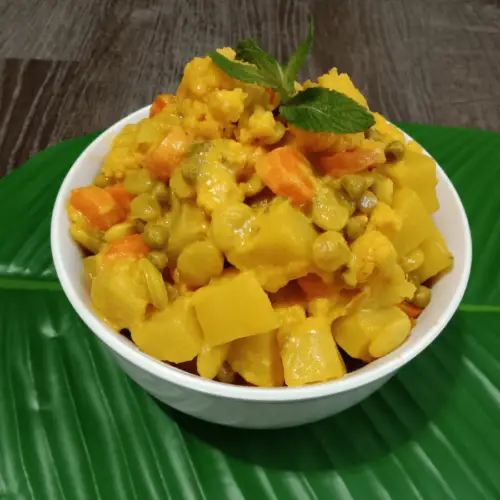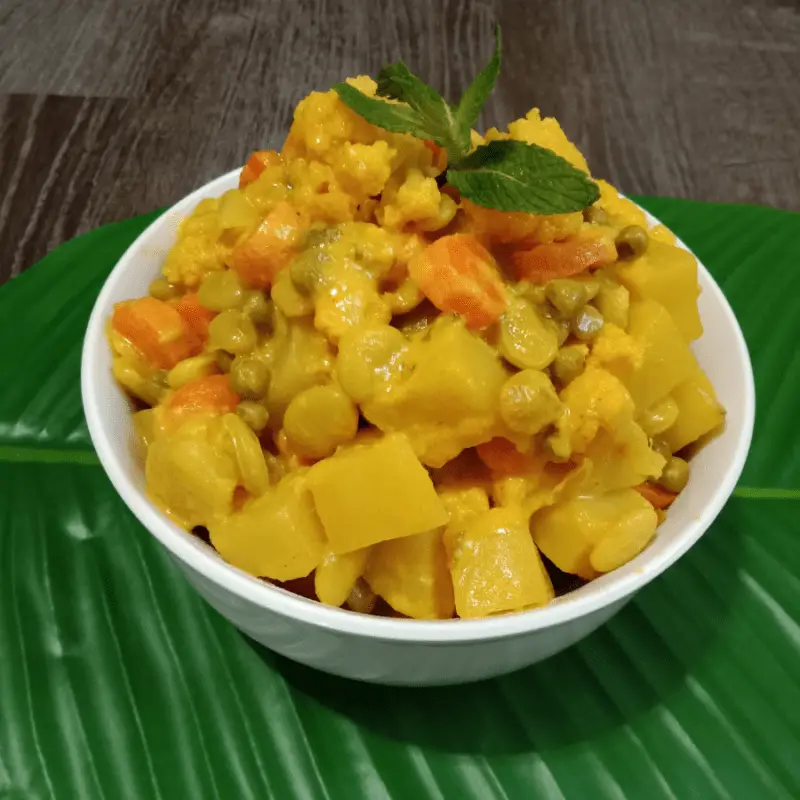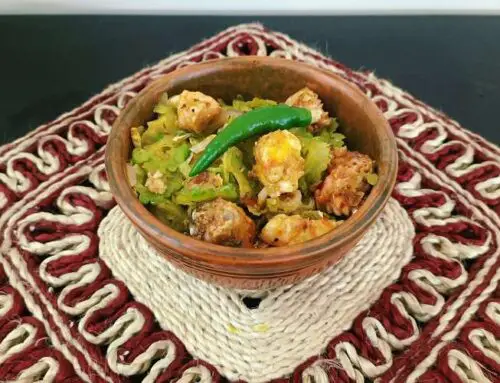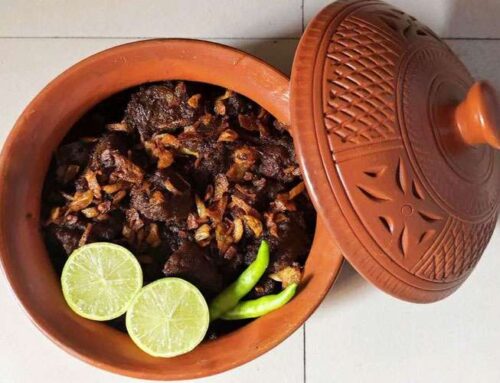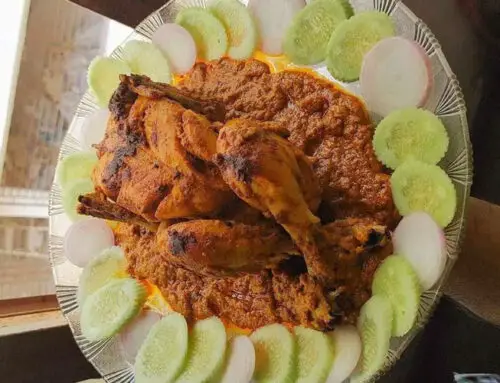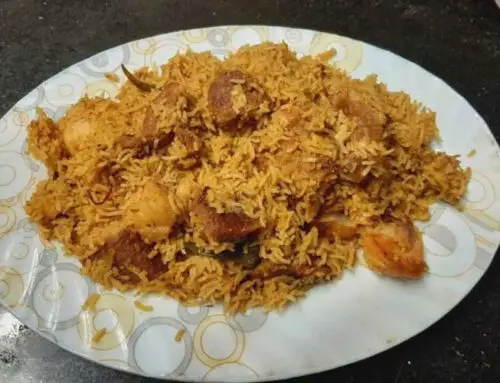Nothing is more comforting than a bowl of fresh warm vegetable curry when it’s cold outside. Don’t you feel the same? On winter days, vegetables are a regular dish in every lunch or dinner. I find vegetable curry with coconut milk with steamed rice to be the most satisfying combo ever. This particular dish can have several meanings depending on the culture.
In general, it’s a meal with a flavorful sauce consisting of vegetables that are frequently served over rice and seasoned with a variety of spices. This Vegetable Curry with Coconut Milk recipe will take less than 30 minutes to make and a big advantage is that can be served for the whole family!
A delicious vegetable curry is stuffed with plenty of veggies. Also, veggies with coconut milk is one of my favorite vegetarian meals. Warming and soothing, it is also naturally gluten-free. It’s perfect for those days when you want to crave some fresh vegetables and want a great addition to the meals you’re having.
Curry is an incredible food to include in a healthy diet. Making it at home gives you control over the ingredients and allows you to give it a healthy twist. Coconut milk curry often has higher calorie and saturated fat counts, but this is also what gives it its taste! Use full-fat coconut milk to make a curry that is richer, creamier curry and thicker. You can consider conventional coconut milk as lite coconut milk is 60% lower in calories and fat comparatively.
Coconut milk has a wide range of uses and can be added to both savory and sweet dishes. It is used to provide smoothness and fat to everything, from sauces and salads to curries and stews to puddings and dessert soups. Coconut milk provides calcium, vitamin A, vitamin B12, vitamin D, etc. It’s full of nutrients and you don’t need to worry about your dieting!
I like to prepare my own curry at home because I can choose the ingredients and vegetables. But if you want to make your dish the exact taste that I do, you have to buy or choose fresh vegetables. Nowadays, vegetables are easily fabricated with formalin. So, when you buy any vegetable make sure that you immerse vegetables in salt water for 90 minutes like one and a half an hour. After that, immerse it in a vinegar-water solution for another hour.
Most curries contain components like ginger, garlic, and spices high in anti-inflammatory chemicals. There are many colorful veggies in this dish. Vegetables are a crucial part of a healthy diet because they give us the fiber, vitamins, and minerals we need to stay strong. You can say it has flavors as well as health benefits with it. This recipe is an excellent way to integrate more veggies into your diet without even trying!
I try to make my recipes adaptable, thus the ingredient list for this curry says “vegetables of your choosing.” This implies that you can utilize any of your preferred or available veggies. You may also combine and contrast. Therefore, you can easily replace the vegetables you use with whatever you have on hand because they are fairly forgiving.
This vegetable curry is high in protein and fiber that is obviously to be a staple in any family who loves cooking! Coconut milk sweetens the curry and balances off the spiciness, maintaining a lovely balance.
The preparation time is a little lengthy. So, prepare yourself, because this stage will take a long time and patience. You have to cut a lot of veggies and prepare them to cook. It is the extra affection you provide that will end in a completely nutritious and wonderful cuisine. Let’s not waste any time further and jump into the recipe!
Ingredients
Vegetable Ingredients: (You can use vegetables of your choice)
- ½ cup green Papaya
- ½ cup Carrot
- ½ cup Cauliflower
- ½ cup Shelled Edamame
- ½ cup Green Peas
Other Ingredients
- 1 cup 1 cup chopped Onions
- 2 green Chilies
- 2 tbsp chopped Coriander leaves
- 1 tbsp Ginger paste
- 1 tbsp Garlic paste
- 2 inch Cinnamon stick
- 2-3 Green Cardamoms
- 4-5 Cloves
- 1½ tsp Chili powder
- ¼ tsp Turmeric powder
- 1 tbsp Coriander powder
- 1 tsp Cumin powder
- 1 tsp Black Pepper powder
- 3 cup Coconut milk
- ⅓ cup Cooking Oil
- ¼ tsp Sugar
- Salt to taste
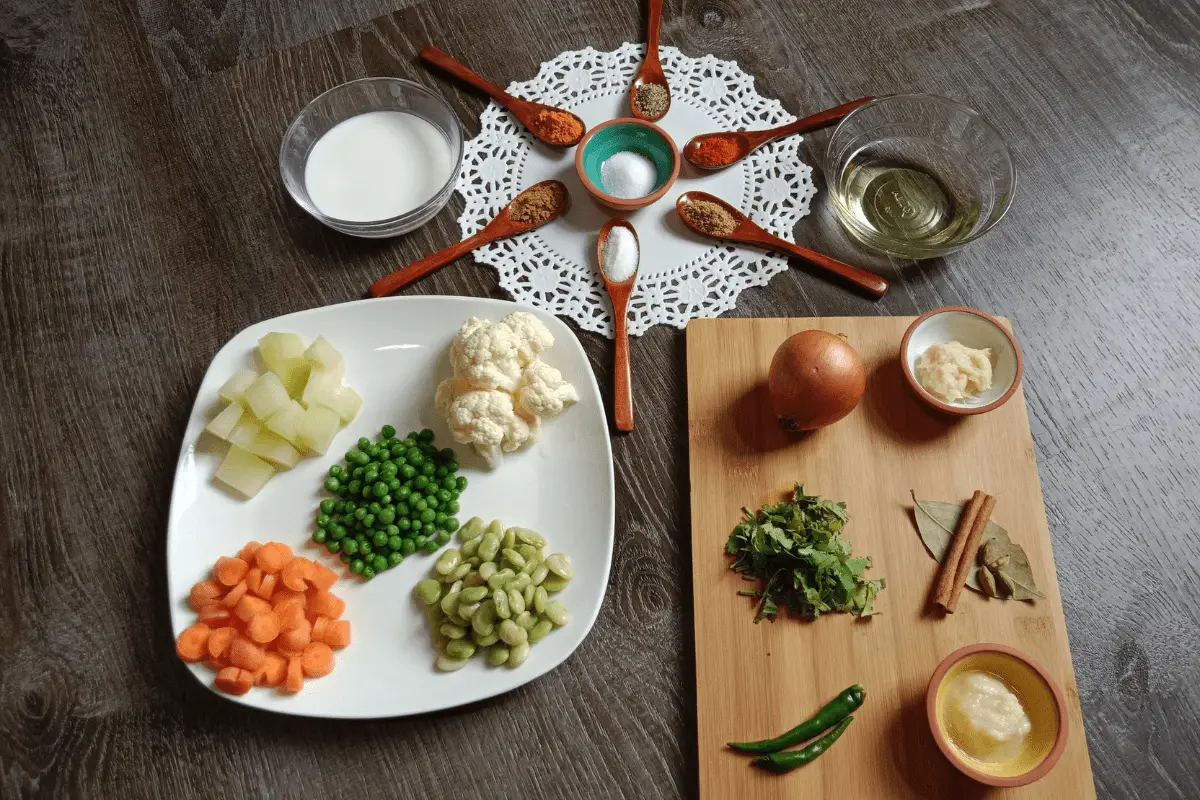
Instructions
- Wash and chop the papaya, carrots, and cauliflower into small pieces.
- Heat Oil in a pot. Add Cinnamon, Cardamom, Cloves, and fry for 2-3 minutes.
- Add onions and fry until onions soften up. Add ginger and garlic paste and mix well.
- Cover and cook for 1-2 minutes. Then add salt, chili powder, turmeric powder, coriander powder, cumin powder, black pepper powder and mix well.
- Add ½ cup warm water, stir and cook until oil separates. Add coconut milk and sugar, stir and bring it to a boil.
- Add hard vegetables like Papaya and Carrots first and mix well. When the Papaya and Carrot are half cooked, add the rest of the vegetables and mix.
- Add green chilis and cook for 7-10 minutes or until the vegetables are tender.
- Top it off with chopped Coriander leaves.
- Serve with boiled rice or pulao.
Nutrition

